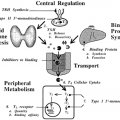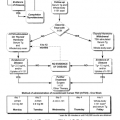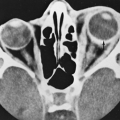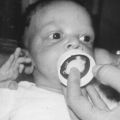PHARMACOLOGIC MANIPULATIONS
Part of “CHAPTER 34 – THYROID UPTAKE AND IMAGING“
Tests that use the thyroid scan or uptake, in conjunction with pharmacologic manipulation of the hypothalamic–pituitary–thyroid axis, may provide additional diagnostic information in certain disorders. Three such tests involving the use of T3, potassium perchlorate, and TSH are discussed next.
TRIIODOTHYRONINE SUPPRESSION TEST
The T3 suppression test is based on the finding that the administration of T3 (75–100 μg per day for 8–10 days) suppresses the uptake of radioiodine in the normal thyroid gland by at least 50% but does not suppress uptake in Graves disease or toxic nodular goiter because the thyroid glands in the latter are autonomous and not dependent on pituitary TSH.56,57 The T3 suppression test, once popular for the diagnosis of borderline hyperthyroidism, is only occasionally used today in conjunction with imaging to determine thyroid nodular autonomy. Modifications of the standard T3 suppression test are necessary in some conditions. Occasional patients, particularly those with nodular thyroids, may exhibit autonomous increase in thyroid function while receiving long-term replacement therapy with T4.58 This may be confirmed by measuring the thyroid uptake without discontinuing T4 and without the addition of T3. Such uptake measurements normally should be no more than 1% to 2%. The adequacy of suppressive thyroid hormone therapy can be evaluated in the same manner, although the ultrasensitive TSH assays and the thyrotropin-releasing hormone stimulation test offer alternative methods (see Chap. 15).
Stay updated, free articles. Join our Telegram channel

Full access? Get Clinical Tree







